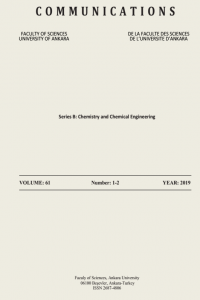EFFECT OF NO. NO AND Cl ON THE CORROSION BEHAVIOUR OF (LEAD - TIN) ALLOY IN ACID MEDILM
Corrosion of (lead-tin) alloy (34.5 % lead and 65.5 % tin) in deaerated Solutions of 0.1 M oxalic, tartaric and citric acid Solutions in presence and absence of NO~2, NO“3 and Cl- ions were studied by means of potential-time, corrosion rate, corrosion current, and galvanostatic tech- nique at the pH range 2.5-6.5 for 0 1 M of the three acids. At pH 4.5 there is a maximum nega- tive potential at the öpen circuit-time curves for oxalic acid and at pH 5.5 for tartaric and citric acid Solutions. From pH 2 5 to 4.5 the corrosion mechanism is anodically controlled by the reaction of Sn?+ ion with anion of the tested acids. The open-circuit potential of the alloy in the three acids reduced in the presence of Cl", AO 3 and NO“2 ions. This is may be due to the attack of the oxidc film by the tested anions, then followed by film repair via the insoluble complex species. Corrosion rate and corrosion current of the alloy inereases as compared to the püre tin results.
Keywords:
EFFECT, CORROSION ACID MEDILM,
___
- EFFECT OF NO. NO AND Cl ON THE CORROSION BEHAVIOUR OF (LEAD - TIN) ALLOY IN ACID MEDILM
- ISSN: 1303-6017
- Başlangıç: 1948
- Yayıncı: Ankara Üniversitesi
Sayıdaki Diğer Makaleler
